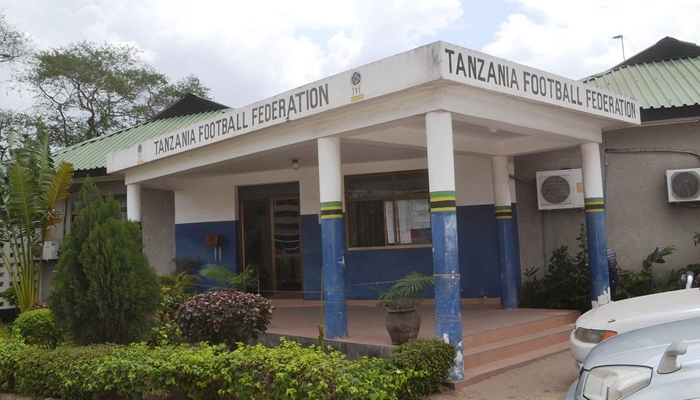Dar es Salaam. Authorities in Tanzania’s northern region of Arusha will spend some sleepless nights in the coming few days trying to repair the damaged relations between villagers of the region’s Mto wa Mbu area and rangers whose latest face-off left two people dead, with two others feared drowned in the region’s Lake Manyara.
Reports of the clashes started to emerge on May 22, 2023, when rangers from the Tanzania National Parks (TANAPA), the agency tasked with managing the country’s national parks, blocked fishermen from Jangwani village of Mto wa Mbu from fishing in a section of Lake Manyara
Villagers told journalists that rangers knocked several fishermen’s boats, causing them to capsize, leaving the fishermen floating helplessly on the water, trying to save themselves from drowning.
“The rangers started to knock our boats out with their motor-powered boat,” a fisherman from the Jangwani village, Samson Nyakisi, recounted. “There were about 36 people who were left floating on water.”
READ MORE: Ngorongoro: A Blot on Samia’s Human Rights Record?
After the fishermen noticed two of their colleagues were missing, they returned to the village to report the incident to their fellow villagers, who subsequently organised demonstrations, blocking the main road connecting Mto wa Mbu and Karatu, one of Arusha’s seven districts.
The villagers protested the alleged drowning of their two fellow villagers at the village government offices, leading police officers to open fire on the protesting villagers, leaving two villagers dead, one on the spot and another while receiving treatment at the Mount Meru Hospital.
Police claim that the villagers were “causing destructions and tried to enter TANAPA offices,” a claim villagers refute.
Reports indicate that police opened fire in the presence of the area’s ward councillor and the Monduli district commissioner, Mr Joshua Nassari, who arrived at the scene intending to calm the situation and bring some order.
“It was a challenge,” Mr Nassari, who took the villager’s body that police shot dead, described what he saw. “The misunderstanding between fishermen and conservators led to this demonstration which erupted into a big scuffle.”
Investigation underway
On May 23, 2023, Arusha regional police commander Justine Masejo said the region’s law enforcement agency would investigate the incident, pointing out that police are already holding twelve individuals in connection with the clashes.
Addressing the incident on May 23, 2023, Minister for Tourism and Natural Resources Mohamed Mchengerwa applauded the rangers for their bravery in protecting Tanzania’s natural resources even at a time when doing so risked their lives.
“Although our rangers were armed, they never used force in arresting these criminals and poachers,” Mr Mchengerwa told journalists. “Thanks to this, these criminals organise and attack our rangers and disappear with criminals already under arrest.”
READ MORE: Conservation: This is How Humans, Wild Animals Can Coexist In Tanzania
But fishermen from the village deny being involved in criminal activities, complaining instead of being on the receiving end of violence from park rangers. According to villagers, confusion exists on what constitutes a protected area and what does not.
For example, Richard Rogert, a fisherman and villager of the Jangwani area, told local media that they have been pleading with authorities for a long time to clear the confusion park rangers use to harass the villagers daily.
“We carry out our fishing activities in a nonprotected zone, but [rangers] still come and knock our boats,” Rogert complained. “They do that while saying the area is a TANAPA protected zone but no beacons proving that can be seen.”
But TANAPA’s conservation commissioner William Mwakilema told reporters that beacons used to exist, but villagers themselves removed them.
READ MORE: LHRC Wants Existing Conservation Laws Scrapped Off Tanzania’s Law Book
“The conserved areas include the Marang Forest, the Rift Valley corridors, and part of the Lake Manyara,” Mr Mwakilema noted while addressing the recent clash between his rangers and villagers. “The areas were identified and demarcated in collaboration with stakeholders, but some unruly residents have destroyed the beacons.”
This is not the first time that conservation authorities in Mto wa Mbu become at loggerheads with villagers in the area.
On November 17, 2018, three fishermen – Paulin Ngalabushi, Isack Nyingi, and Cornelius Karabona – who had camped at Lake Manyara were reported to have gone missing, never to be seen again, with unconfirmed reports suggesting that park rangers took them.
Main drivers
Geographically Mto wa Mbu sits right at the bottom of the Rift Valley. It connects two important national parks, Tarangire National Park and Lake Manyara National Park. Together, the two form the Tarangire Manyara Ecosystem.
The town lies along a vital transport route connecting Arusha and Mara regions through the Serengeti. It is on a flat terrain with wealthy soils and is drained by tributaries from the upper part of the Rift Valley.
READ MORE: Majaliwa Receives Indigenous Peoples’ Recommendations on Conservation
Dr Ronald Ndesanjo, a human ecologist from the University of Dar es Salaam, thinks these factors are the main drivers for Mto wa Mbu’s rapid urbanisation and expansion.
He told The Chanzo during an interview that more recently, the towns of Mto wa Mbu and Karatu have attracted enormous tourist investments, especially lodges, campsites and support infrastructures and other facilities.
“Amidist all these dynamics is population growth and subsequent rise in demand for food and fresh produce to feed the town’s burgeoning population and nearby areas,” Dr Ndesanjo said. “This is coupled with rising demand for areas to settle the expanding population and influx of people.”
These dynamics have resulted in spillover effects on Lake Manyara National Park and the lake itself, Dr Ndesanjo thinks.
They include lake eutrophication from farming and other human activities in Mto wa Mbu and rapid expansion of farms into the lake’s wetlands and fringes, posing a threat to the lake’s existence.
“The ecological impacts on the lake are slower and hardly attract violent response from conservation authorities,” Dr Ndesanjo told The Chanzo. “The villagers’ encroachment is likely to trigger an immediate and often violent response by park rangers. The latter aspect might have led to the recent incident.”
Stopping the violence
Asked for his opinion on how best the government can improve the relations between conservation authorities and surrounding communities, Dr Ndesanjo said there is no shortcut to achieving that, laying out what he calls “long-term but important” initiatives to prevent violence from recurring.
“The government should make long-term investments to create alternative livelihood opportunities to park neighbouring communities,” he suggested. “These could range from eco-tourism, community-based conservation in its truest sense and other secondary livelihood options.”
Dr Ndesanjo also called on the government to re-evaluate its population and conservation policies to bring about harmony between rapid population expansion and efforts to expand conservation areas and initiatives in the country.
“Proceeds from tourism should be adequately shared with park neighbouring communities as opposed to being appropriated by central government and the political and business elite class,” he suggested.
“This way, a common Tanzanian will see the true benefits of conservation and very likely support it,” the expert added.





One Response
Very interesting I am doing some research on the conflict between ranges and local villages. Designing some training for the Tanzania wildlife service. Do you have any more information like this?